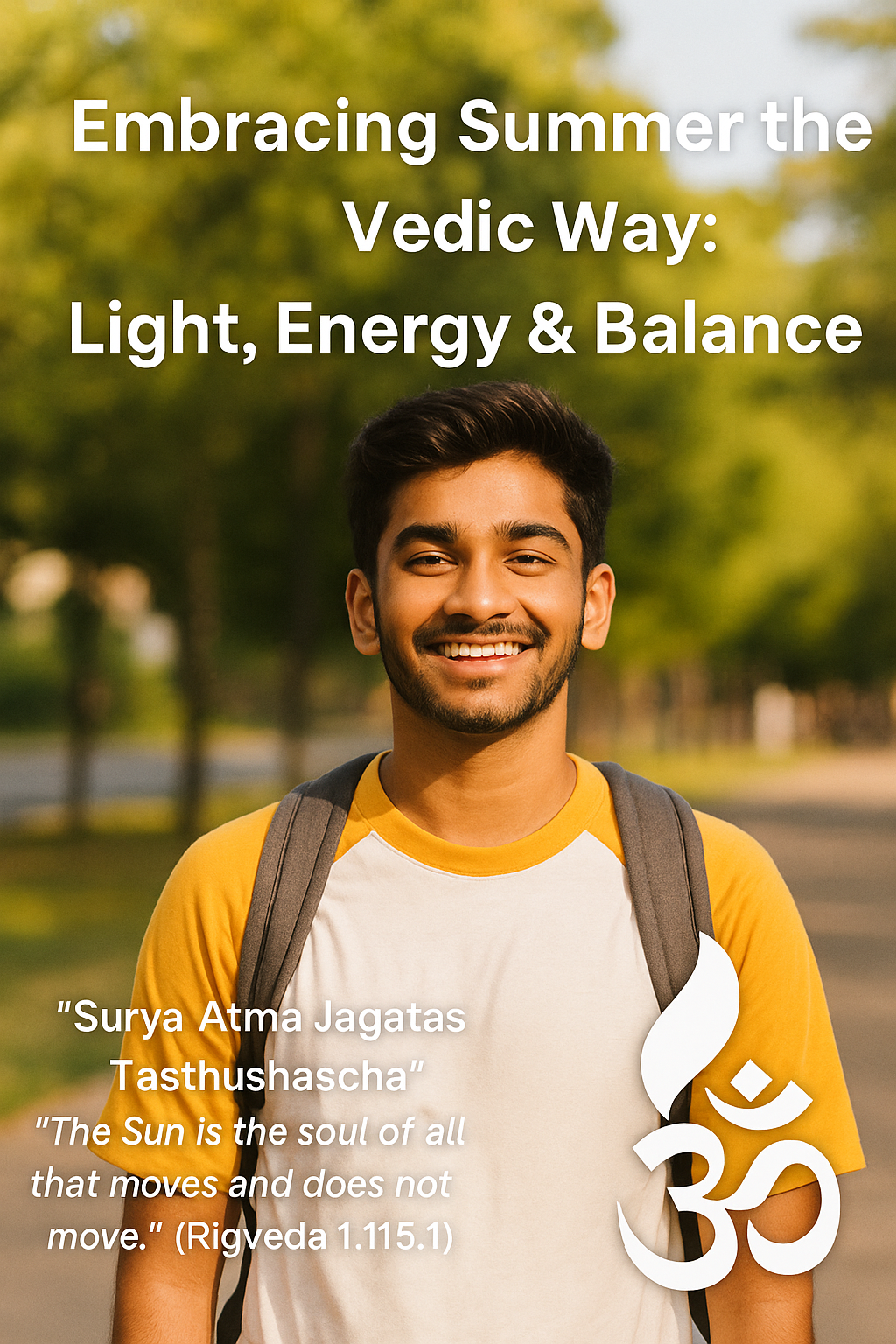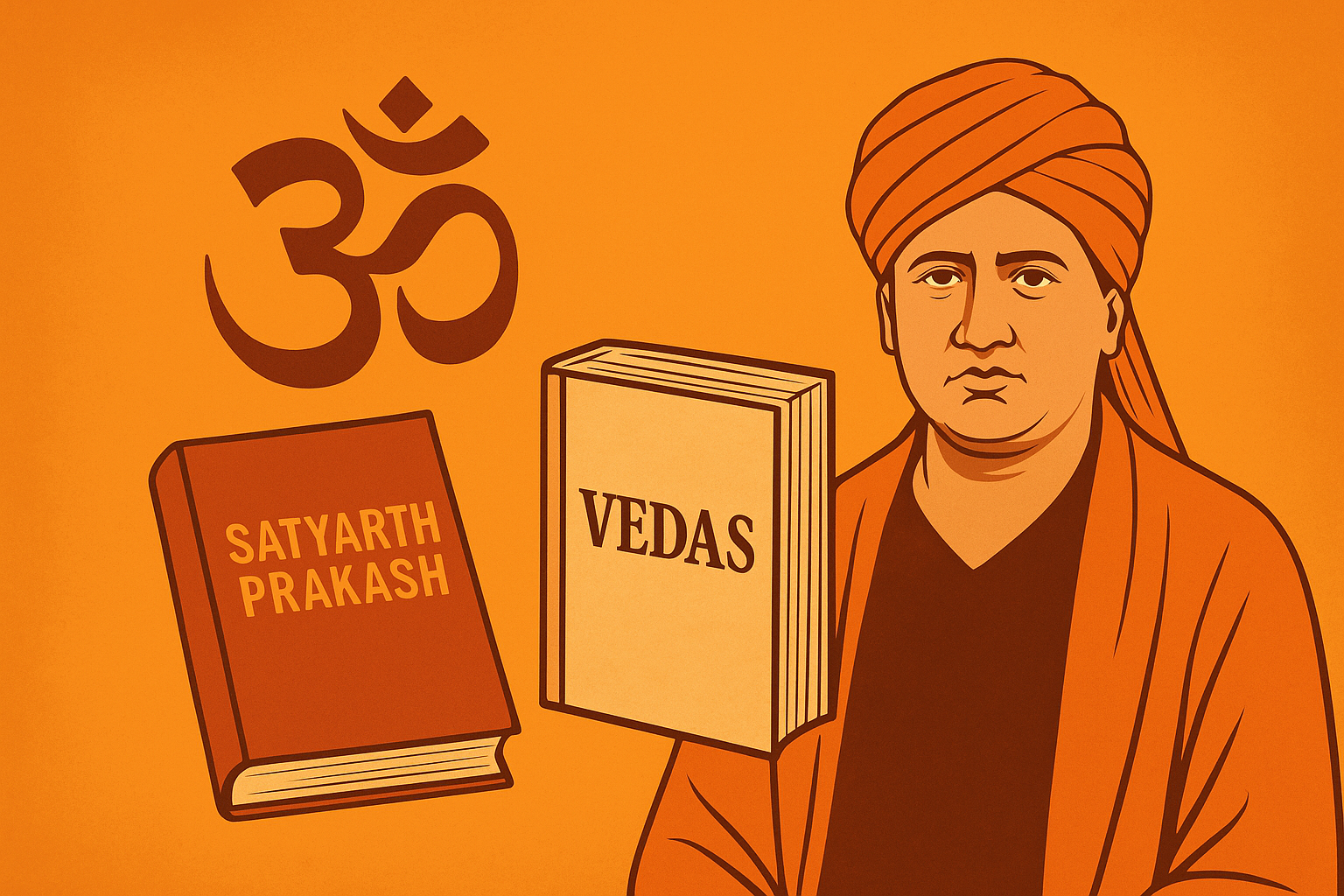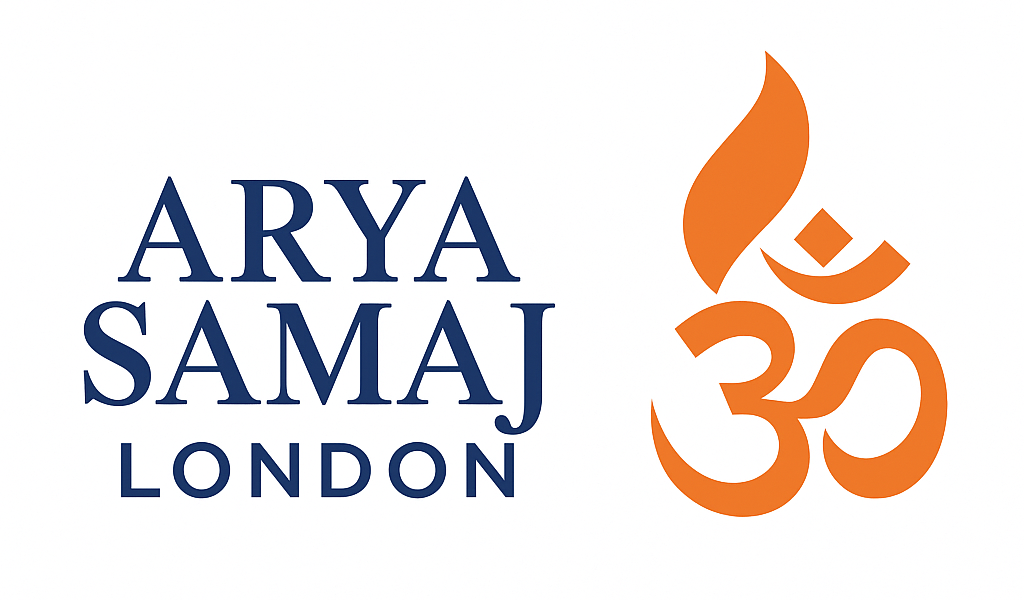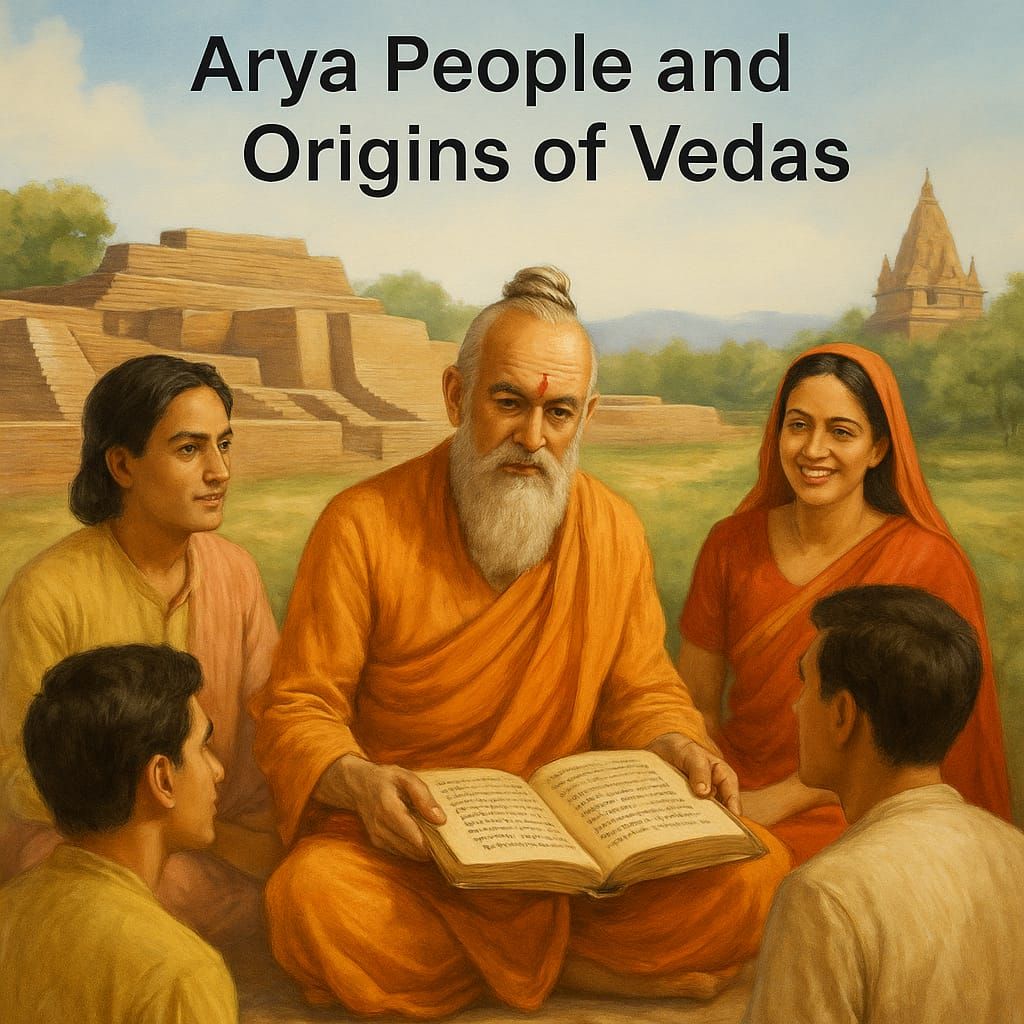
A rya People and the Origins of the Vedas One of the great questions in history — and indeed of the Arya Samaj itself — is: Where did we come from, and what are the origins of the Vedas? This debate is tied to archaeology, linguistics, genetics, and textual analysis, and has been approached in different ways by scholars and spiritual thinkers. For Arya Samaj, understanding these perspectives helps us connect history with our Vedic principles. Two Main Perspectives There are two broad schools of thought: 1. The Scientific and Historian View — often called the Aryan Migration Theory. 2. The Indigenous Arya View — that the Aryas and Vedic tradition are native to India. The Scientific and Historian View - Modern research suggests India has always been a land of deep continuity and cultural mixing. - Early Presence: Human settlement stretches back more than 500,000 years, with cave dwellers still present 10,000 years ago. - Transition to Farming: Over time, hunting and gathering gave way to farming and pottery- 8 making. - Indus Valley Civilisation: From around 5,000 years ago, cities such as Mohenjo-Daro and Harappa thrived. These centres had advanced architecture and drainage systems. Their culture was strikingly peaceful: - There were no temples, idols, or weapons of war, - Instead, there was a focus on cleanliness, order, and discipline. This resonates strongly with Vedic ideals of simplicity, purity, and harmony. Later, Indo-European–speaking peoples are believed to have migrated in waves from the Eurasian steppe — a region stretching from today’s Southern Russia through Afghanistan — over many centuries until around 1500 BCE. The Indigenous Arya View By contrast, many Indian scholars and thinkers — and indeed the Arya Samaj tradition — hold the view that the Aryas were indigenous to India. According to this perspective: - The Vedic civilisation did not arrive from outside but was always rooted in the sacred land of Bharat. - The continuity of culture, language, and spiritual traditions points to a native origin rather than migration. - The wisdom of the Vedas is seen as timeless, universal, and born in India itself. This interpretation emphasises the spiritual rather than the material — highlighting that the Vedas are not the creation of any one people or place, but divine knowledge revealed for all humanity. The Arya Samaj Perspective Swami Dayanand Saraswati, founder of the Arya Samaj, declared that the Vedas are eternal, without beginning or end. They are not a product of migration, conquest, or politics, but rather the revealed wisdom of God. When Sir Isaac Newton observed gravity in 1666 in Lincolnshire, England, it would be ludicrous to think gravity only existed in that spot. Similarly, the truth and application of the Vedas is universal, whether in India, Lincolnshire or in London. For Arya Samaj: - The focus is less on where the Aryas 'came from' and more on the eternal and universal truth of the Vedas. - What matters is how we apply these truths today — in education, reform, equality, and service. 9 Conclusion Whether viewed through the lens of modern science or through the indigenous and spiritual perspective, the story of the Aryas and the Vedas is one of continuity, depth, and inspiration. For us in Arya Samaj London, the essential message is clear: - The Vedas guide us not just to study the past, but to live noble lives in the present. As our motto reminds us: Krinvanto Vishwam Aryam — Let us make the world noble. Rajeev Sharma
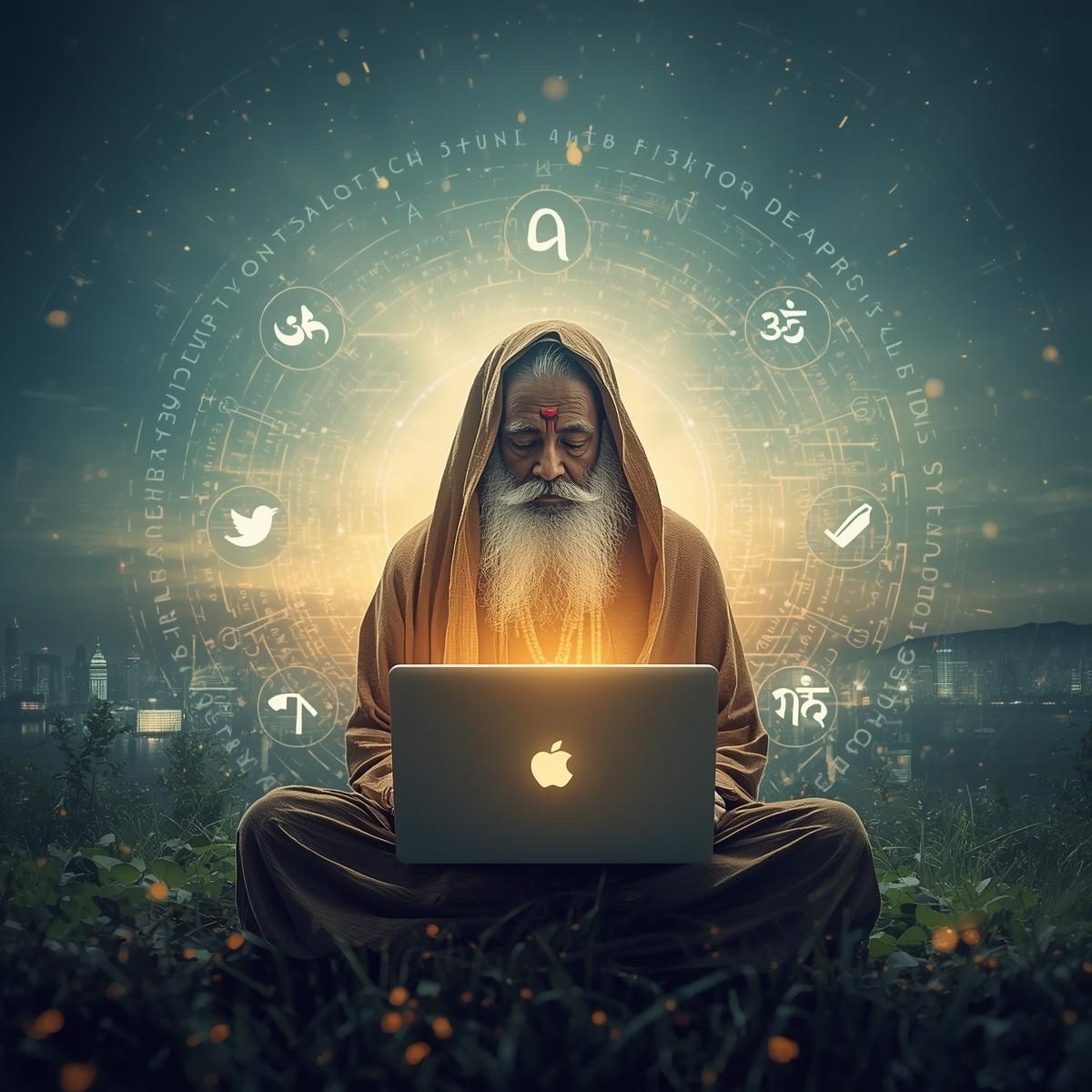
Vedic Wisdom for a Tech-Driven World Prof. Nawal K Prinja In a world where AI is rewriting the rules and quantum mechanics reveals that particles can exist in multiple states at once - both here and there, both moving and still - an ancient Hindu verse offers a mind-bending insight “It moves, and it moves not. It is far, and it is near. It is within all this, and it is outside of all this.” — Isha Upanishad, Verse 5. Yajur Veda 40-5. At first glance, it sounds like a riddle. How can something be still yet moving? But it’s actually a profound truth: the essence of reality. What Hindus call Brahman, is both the force behind all motion and the stillness at its core. Imagine a spinning wheel whose hub never moves, or a mind racing with thoughts while the soul remains calm. This idea isn’t just spiritual poetry, it’s a way to understand how progress, especially in technology, must stay rooted in awareness and purpose. Swami Dayananda Saraswati, the founder of Arya Samaj, offered a bold reinterpretation of Brahman that resonates powerfully today. He taught that Brahman is not a mystical abstraction, but a formless, all-knowing, all-powerful reality, the intelligent cause behind the universe. For Dayananda, Brahman is accessible through reason, ethics, and Vedic wisdom, not through ritual or blind faith. In his words, the divine is not confined to temples or idols - it is the lawgiver behind nature, the moral compass within us, and the truth that guides innovation. The Science of Stillness in Motion Modern science is catching up with what ancient sages intuited. Quantum physics shows that particles can be entangled across space and time - moving, yet somehow still connected. Imagine you have two magical dice. No matter how far apart they are, one on your desk in London, the other on a mountain in Nepal, the instant you roll one, the other immediately shows the matching result. It doesn’t matter how much distance separates them; their connection is instant, as if the universe itself whispers the answer between them faster than light. This is quantum entanglement: a mysterious bond between particles where their fates are intertwined. When two particles become entangled, they stop behaving like separate things. Instead, they act as one system, even if they are light years apart. Einstein once called it “spooky action at a distance” because it seems to defy our common sense. And yet, this phenomenon has been proven repeatedly in experiments, so much so that today it’s the foundation of futuristic technologies like quantum computing, ultra-secure communication, and sensors of extraordinary 6 precision. In essence, entanglement shows us that the universe is far more interconnected, subtle, and wondrous than our everyday experience suggests. AI systems can learn and adapt, but they lack true awareness. They move through data, but do they “know”? AI systems can learn and adapt, but they lack true awareness. Their intelligence is kinetic, driven by algorithms, feedback loops, and pattern recognition. Yet beneath this motion lies a profound absence: no self, no still point, no witnessing consciousness. They process without presence. In contrast, the human mind, when stilled, becomes more than a processor—it becomes a perceiver. This is the science of stillness: where awareness is not the result of computation, but the condition for meaning. AI may simulate cognition, but it cannot abide with awareness. It moves, but it does not know that it moves. • Neuroscience reveals that the brain’s most creative moments often arise during rest. Stillness isn’t stagnation - it’s integration. This paradox - movement without chaos, stillness without inertia - is the very fabric of reality. And it’s the key to building technologies that are not just fast, but wise. Swami Dayananda’s Brahman fits this paradox perfectly: unchanging, yet dynamic; formless yet present in every form. It is the still point from which all motion arises - a concept that aligns beautifully with both quantum logic and ethical design. Let me explain. Swami Dayananda’s description of Brahman - unchanging yet dynamic, formless yet present in every form - captures a deep paradox. It’s like the silent source behind all movement, the calm center from which everything flows. This idea resonates beautifully with quantum logic, where particles can exist in multiple states at once— both here and there, both moving and still. In quantum thinking, reality isn’t fixed; it’s fluid, interconnected, and full of hidden possibilities. And just as quantum logic invites us to rethink how the universe behaves, ethical design asks us to rethink how we shape technology and society. It means creating systems that are not only smart, but also fair, compassionate, and sustainable. So, when we say Brahman aligns with quantum logic and ethical design, we’re pointing to a deeper harmony: a world where truth is subtle, choices are thoughtful, and progress is guided by wisdom. Today we are living through the 4th industrial revolution powered by AI and Internet of Things (IoT), but scientists are already preparing for the 5th industrial revolution. The latest vision is outlined in reports from the European Commission in which it talks about shift in focus toward human-centric, sustainable, and resilient industrial development. Dharma in the Digital Age Hindu philosophy doesn’t fear technology - it sanctifies it. Ancient Hindu Vedic scriptures like the Śulba Sūtras show how tools (measuring ropes, pegs, fire altars) and technologies (geometry, area transformation, proportional design) were applied to align human activity with the cosmic order — blending science, spirituality, and engineering. The Vedic message is clear: use with purpose, create with conscience. The Isha Upanishad warns against the extremes of pursuing only material knowledge (Avidyā) or only spiritual insight (Vidya). True wisdom lies in their union. As Verse 11 declares: “He who knows both Vidya and Avidyā together, crosses death through Avidyā and attains immortality through Vidya.” But the Upaniṣhad goes further in Verse 9, cautioning that even immersion in spiritual knowledge alone can lead to deeper confusion: “Into blind darkness they enter who worship Avidyā alone; into even greater darkness they enter who are devoted to Vidya alone.” This paradox reminds us that knowledge without grounding, and transcendence without engagement can both obscure the truth. The path to liberation is not through rejection of the world, nor through blind attachment to it, but through integration. Material understanding helps us navigate life; spiritual insight helps us transcend it. Together, they illuminate the whole. In today’s terms: • Let AI serve human dignity, not just efficiency. 7 • Let innovation honour ecology, not just economy. • Let progress be inclusive, not isolating. This is Yuktivāda—the rational integration of science and spirit. And it echoes Swami Dayananda’s call to return to the Vedas, not as relics of the past, but as living guides for ethical advancement. Why Youth Are Drawn to This Philosophy Young minds today are not just techsavvy, they’re ethically curious, spiritually open, and globally aware. Hindu philosophy speaks their language. This isn’t about converting anyone, it’s about connecting. Hindu thought offers a lens to see technology not as a threat, but as a tool for transformation—grounded in truth, guided by conscience. The Still Point of the Turning World As we stand at the crossroads of machine intelligence and human wisdom, the Vedic mantra is not just ancient - it’s urgent. It reminds us that while our tools evolve, our values must remain anchored. Let our algorithms be swift, but our hearts be still. Let our networks expand, but our consciousness deepens. Let us move - and move not.
